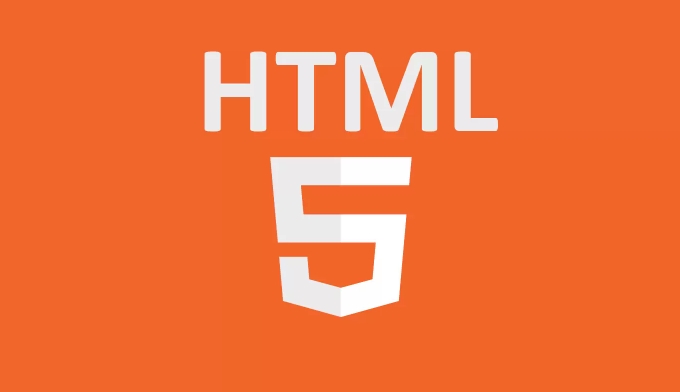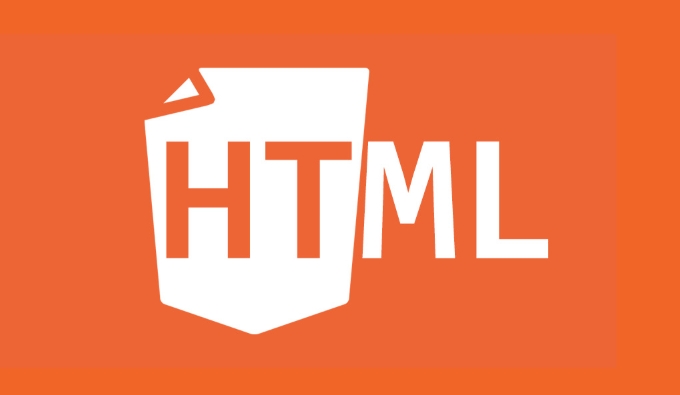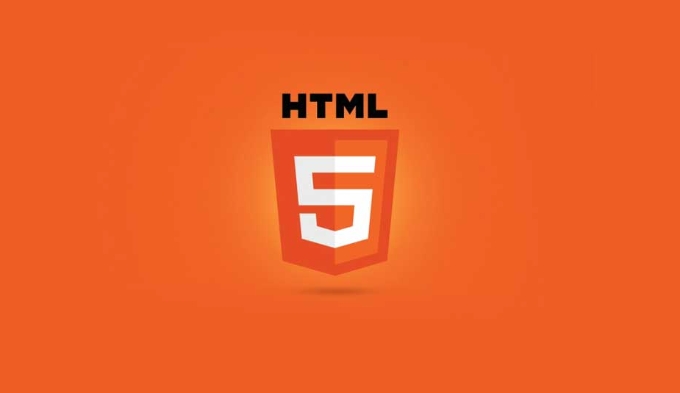WebGL is suitable for data visualization because of its high performance, cross-platform compatibility and rich visual performance. It is based on GPU rendering and can efficiently process large amounts of data and complex animations such as heatmap, particle systems and 3D charts. It is recommended to use encapsulation libraries such as Three.js, PixiJS, Deck.gl, etc. to simplify development. Mobile devices need to pay attention to device compatibility, performance optimization, memory management and touch interaction adaptation. WebGL Inspector, check for OpenGL errors, simplify shaders, and add log output during debugging. Only by choosing the right tools and paying attention to details can you achieve a stable and beautiful visual effect.

WebGL is a key technology for achieving high-performance 2D/3D graphics rendering on modern web pages, and is especially suitable for interactive data visualization. If you want to embed dynamic, smooth and visually impactful data displays into your H5 pages, WebGL is a good choice.

Why use WebGL for data visualization?
WebGL is based on GPU rendering and can directly run complex graphics calculations in the browser without requiring additional plug-ins. Compared to SVG or Canvas 2D, it is more suitable for handling real-time rendering and complex animation effects of large numbers of data points. WebGL can easily deal with scenarios such as map heatmaps, particle system simulations, three-dimensional bar charts, etc.
Its advantages are:

- High performance : utilizing GPU parallel processing capabilities, suitable for large data volume
- Good cross-platform compatibility : mainstream browsers support it
- Rich visual performance : supports shader language (GLSL), and can customize rendering effects
How to start using WebGL for data visualization?
It is quite cumbersome to write the WebGL API directly, and it is recommended to use encapsulated libraries to simplify the development process. The most popular libraries are:
- Three.js : Suitable for three-dimensional visualization, and the learning curve is relatively friendly.
- PixiJS : Mainly used for 2D rendering, but excellent performance
- Regl : Lightweight, suitable for developers who need flexible control of WebGL
- Deck.gl / Luma.gl : designed for geospatial data, suitable for map applications
Taking Three.js as an example, you can first create a basic scene, then generate geometry or particle system based on the data, and then bind interactive events (such as clicks, drags and drops) to enhance the user experience.

Issues that need to be paid attention to on mobile H5
Although WebGL supports a wide range of support, there are still some "pits" that need attention in H5 mobile development:
- Device compatibility : Some low-end phones may not support certain advanced features, such as texture quantity limitations and shader accuracy issues.
- Performance optimization : Avoid frequent update of large amounts of vertex data per frame, try to use buffer objects (VBO)
- Memory management : Release unused textures and buffers in time to prevent memory leakage
- Touch interaction adaptation : Mouse wheel zooming should be replaced with two-finger zooming, and click events should also be adapted to touchstart/touchend
For example, if a three-dimensional scatter plot is added to the page, the user will stagnate when sliding the screen, which is likely to be caused by the failure to use frustum culling reasonably or anti-aliasing is not enabled.
How to debug a WebGL page?
Once there is a problem with the WebGL page, it is more troublesome to locate it. Here are a few practical tips:
- Use the browser's "WebGL Inspector" extension to view the current shaders, textures and other resources
- Print gl.getError() to confirm whether there is an OpenGL error
- Replace complex shaders with simple color fills to quickly troubleshoot whether it is a shader problem
- Add console.log output in key steps to gradually narrow down the problem
Basically that's it. Although WebGL is powerful, it is not omnipotent. Only by choosing the right tools and paying attention to details can you create a stable and beautiful visual effect.
The above is the detailed content of H5 WebGL for Interactive Data Visualizations. For more information, please follow other related articles on the PHP Chinese website!

Hot AI Tools

Undress AI Tool
Undress images for free

Undresser.AI Undress
AI-powered app for creating realistic nude photos

AI Clothes Remover
Online AI tool for removing clothes from photos.

Clothoff.io
AI clothes remover

Video Face Swap
Swap faces in any video effortlessly with our completely free AI face swap tool!

Hot Article

Hot Tools

Notepad++7.3.1
Easy-to-use and free code editor

SublimeText3 Chinese version
Chinese version, very easy to use

Zend Studio 13.0.1
Powerful PHP integrated development environment

Dreamweaver CS6
Visual web development tools

SublimeText3 Mac version
God-level code editing software (SublimeText3)
 Adding drag and drop functionality using the HTML5 Drag and Drop API.
Jul 05, 2025 am 02:43 AM
Adding drag and drop functionality using the HTML5 Drag and Drop API.
Jul 05, 2025 am 02:43 AM
The way to add drag and drop functionality to a web page is to use HTML5's DragandDrop API, which is natively supported without additional libraries. The specific steps are as follows: 1. Set the element draggable="true" to enable drag; 2. Listen to dragstart, dragover, drop and dragend events; 3. Set data in dragstart, block default behavior in dragover, and handle logic in drop. In addition, element movement can be achieved through appendChild and file upload can be achieved through e.dataTransfer.files. Note: preventDefault must be called
 Using ARIA attributes with HTML5 semantic elements for accessibility
Jul 07, 2025 am 02:54 AM
Using ARIA attributes with HTML5 semantic elements for accessibility
Jul 07, 2025 am 02:54 AM
The reason why ARIA and HTML5 semantic tags are needed is that although HTML5 semantic elements have accessibility meanings, ARIA can supplement semantics and enhance auxiliary technology recognition capabilities. For example, when legacy browsers lack support, components without native tags (such as modal boxes), and state updates need to be dynamically updated, ARIA provides finer granular control. HTML5 elements such as nav, main, aside correspond to ARIArole by default, and do not need to be added manually unless the default behavior needs to be overridden. The situations where ARIA should be added include: 1. Supplement the missing status information, such as using aria-expanded to represent the button expansion/collapse status; 2. Add semantic roles to non-semantic tags, such as using div role to implement tabs and match them
 Securing HTML5 web applications against common vulnerabilities
Jul 05, 2025 am 02:48 AM
Securing HTML5 web applications against common vulnerabilities
Jul 05, 2025 am 02:48 AM
The security risks of HTML5 applications need to be paid attention to in front-end development, mainly including XSS attacks, interface security and third-party library risks. 1. Prevent XSS: Escape user input, use textContent, CSP header, input verification, avoid eval() and direct execution of JSON; 2. Protect interface: Use CSRFToken, SameSiteCookie policies, request frequency limits, and sensitive information to encrypt transmission; 3. Secure use of third-party libraries: periodic audit dependencies, use stable versions, reduce external resources, enable SRI verification, ensure that security lines have been built from the early stage of development.
 Integrating CSS and JavaScript effectively with HTML5 structure.
Jul 12, 2025 am 03:01 AM
Integrating CSS and JavaScript effectively with HTML5 structure.
Jul 12, 2025 am 03:01 AM
HTML5, CSS and JavaScript should be efficiently combined with semantic tags, reasonable loading order and decoupling design. 1. Use HTML5 semantic tags, such as improving structural clarity and maintainability, which is conducive to SEO and barrier-free access; 2. CSS should be placed in, use external files and split by module to avoid inline styles and delayed loading problems; 3. JavaScript is recommended to be introduced in front, and use defer or async to load asynchronously to avoid blocking rendering; 4. Reduce strong dependence between the three, drive behavior through data-* attributes and class name control status, and improve collaboration efficiency through unified naming specifications. These methods can effectively optimize page performance and collaborate with teams.
 Using HTML5 Semantic Elements for Page Structure
Jul 07, 2025 am 02:53 AM
Using HTML5 Semantic Elements for Page Structure
Jul 07, 2025 am 02:53 AM
Using HTML5 semantic tags can improve web structure clarity, accessibility and SEO effects. 1. Semantic tags such as,,,, and make it easier for the machine to understand the page content; 2. Each tag has a clear purpose: used in the top area, wrap navigation links, include core content, display independent articles, group relevant content, place sidebars, and display bottom information; 3. Avoid abuse when using it, ensure that only one per page, avoid excessive nesting, reasonable use and in blocks. Mastering these key points can make the web page structure more standardized and practical.
 HTML5 video not playing in Chrome
Jul 10, 2025 am 11:20 AM
HTML5 video not playing in Chrome
Jul 10, 2025 am 11:20 AM
Common reasons why HTML5 videos don't play in Chrome include format compatibility, autoplay policy, path or MIME type errors, and browser extension interference. 1. Videos should be given priority to using MP4 (H.264) format, or provide multiple tags to adapt to different browsers; 2. Automatic playback requires adding muted attributes or triggering .play() with JavaScript after user interaction; 3. Check whether the file path is correct and ensure that the server is configured with the correct MIME type. Local testing is recommended to use a development server; 4. Ad blocking plug-in or privacy mode may prevent loading, so you can try to disable the plug-in, replace the traceless window or update the browser version to solve the problem.
 Embedding video content using the HTML5 `` tag.
Jul 07, 2025 am 02:47 AM
Embedding video content using the HTML5 `` tag.
Jul 07, 2025 am 02:47 AM
Embed web videos using HTML5 tags, supports multi-format compatibility, custom controls and responsive design. 1. Basic usage: add tags and set src and controls attributes to realize playback functions; 2. Support multi-formats: introduce different formats such as MP4, WebM, Ogg, etc. through tags to improve browser compatibility; 3. Custom appearance and behavior: hide default controls and implement style adjustment and interactive logic through CSS and JavaScript; 4. Pay attention to details: Set muted and autoplay to achieve automatic playback, use preload to control loading strategies, combine width and max-width to achieve responsive layout, and use add subtitles to enhance accessibility.
 Drawing Graphics and Animations using HTML5 Canvas
Jul 05, 2025 am 01:09 AM
Drawing Graphics and Animations using HTML5 Canvas
Jul 05, 2025 am 01:09 AM
HTML5Canvas is suitable for web graphics and animations, and uses JavaScript to operate context drawing; ① First add canvas tags to HTML and get 2D context; ② Use fillRect, arc and other methods to draw graphics; ③ Animation is achieved by clearing the canvas, redrawing, and requestAnimationFrame loops; ④ Complex functions require manual processing of event detection, image drawing and object encapsulation.






